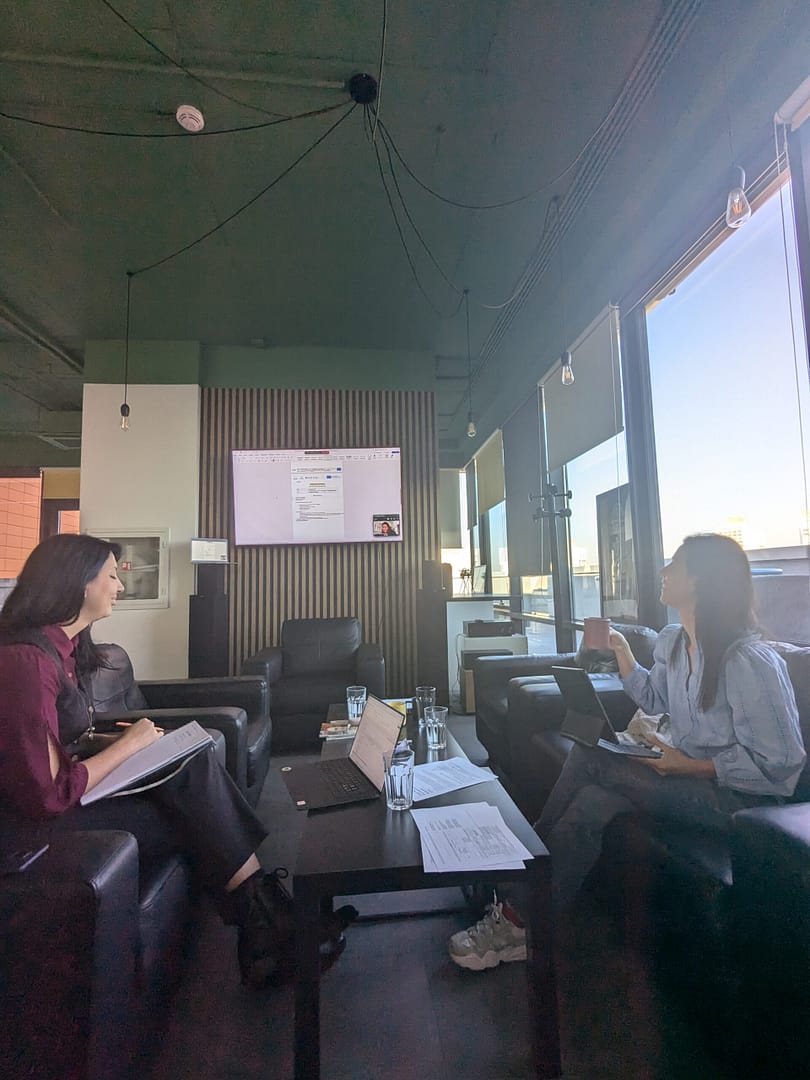Who is the NFE Trainer?
The trainer is the person who prepares, presents and co-ordinates the learning process.
They enable the trainees to discover themselves and develop their potential, motivating them by curiosity, interest, participation and creativity and allowing everyone to learn from each other.
Trainees need to feel relaxed and safe during each session, which is why the trainer ensures a high-quality learning environment. The trainer fosters trust, positive communication, and solidarity, helping the group develop their capacity for expression and analysis by encouraging the sharing of opinions and ideas. By facilitating interaction and exchange, the trainer reinforces existing knowledge and cultivates new understanding.
The trainer emphasizes the value of diverse opinions, viewing them as opportunities, and addresses both individual and collective aspects of expression and learning. They appreciate all expressed opinions and stimulate critical thinking, thereby enhancing participants’ ownership and commitment.
Encouraging dialogue and interaction among participants, the trainer minimizes their own role to what is necessary, thereby breaking the stereotype of the trainer or teacher as the sole source of knowledge.
Abilities
- The NFE trainer is an expert in various forms of group management, communication and presentation.
- They have good intercultural, organizational and time-management competencies, and they can work effectively in teams.
- A NFE trainer is able to design and deliver educational programs.
- They can use different methods for conducting individual and collective evaluations and self-assessments for learners.
- They can support the group in defining and articulating their own outcomes, as well as developing and implementing their own action plans to achieve learning outcomes.
Attitudes
- The NFE trainer actively promotes equality, inclusion, intercultural understanding, and respect for diversity and human rights for all.
- They view trainees as responsible individuals and valuable partners in the learning process and they recognize and value the social capital and experiences of trainees, working to empower them. They are team players and promote cooperation and group achievements.
- They approach the trainer-trainee relationship as horizontal rather than hierarchical and they are committed to sharing power with all team members.
Behaviours
- An NFE trainer serves as a resource and advisor for everyone, maintaining open communication with all participants throughout the training process to demonstrate their availability. They are always approachable, finding the right balance being fun and serious, and they take advantage of informal moments, such as coffee breaks and lunch, to engage with one or several trainees.
- An NFE Trainer shares personal point of views, experiences, and analyses with the group without directing or manipulating participants’ ideas. They validate and encourage participation and the sharing of experiences within the group. Indeed, they refrain from judging participants’ personalities, focusing instead on providing feedback to improve their actions.
- Overall, an NFE Trainer manages to create a framework of trust, by being positive and supportive of their co-trainer(s), maintaining confidentiality and by being open to criticism.
NFE Facilitation styles
Facilitation styles are shaped by a trainer/facilitator’s educational values and reflect their philosophy of education. Recognizing your own facilitation or teaching style(s) can significantly enhance your teaching methods. By tailoring your approach, you can increase student engagement, motivation, and ultimately improve learners’ outcomes and progress. The facilitation styles you choose should align with your goals, materials, and learning objectives.
Central to the facilitation process is the collaboration between facilitator and learner. As such, facilitators often develop a personalized facilitation style that responds to learners’ needs. Depending on the exercise, group dynamics, environment, and personal intuition, facilitators may employ various styles, including:
DIRECTIVE
It is facilitation method where the educator transmits knowledge by providing learners with instructions and explanations, following formal educational practices. Specifically, the educator presents and explain the content, including theory, examples, and applications, while learners receive information passively without active interaction. This style of facilitation is often referred to as “traditional,” focusing on transmitting knowledge through clear directions to minimize errors. It promotes effective learning where logic and factual accuracy take precedence over emotions, perspectives, and personal feelings. Learners engage in a structured learning process aimed at meeting predetermined standards of behaviour.
Benefits of this approach include the possibility for the educator to use a variety of formats such as lectures and multimedia presentations. However, while effective for subjects like mathematics, music, physical education, and arts and crafts, it presents challenges in meeting the individual needs of learners in larger and more diverse classroom settings.
EXPLORATORY
In contrast to the directive facilitation style, the exploratory approach is rooted in student-centred pedagogy, focusing on creating conditions for active involvement and interaction during the learning process. It encourages learners to express their experiences and ideas, think creatively, and develop the ability to reflect on their learning. This method is implemented through posing questions and presenting challenging situations to learners, aiming to explore new material and integrate it with their existing knowledge.
It’s important to emphasize that the exploratory facilitator does not leave learners without guidance but provides opportunities for them to anticipate different lessons and outcomes based on their choices. The exploratory method promotes social interaction and enhances cognitive development, making it particularly effective for teaching critical thinking and problem-solving skills. However, a drawback of this style is the challenge of maintaining educator-learner interaction, as the learning process emphasizes discovery over traditional lecturing and testing of memorized knowledge. As a result, success is not easily measured in concrete terms.
DELEGATING
This facilitation style emphasizes experiential learning. Facilitators empower learners to set goals, develop plans, and assign tasks and roles independently. The facilitator remains available as a resource when needed but avoids formal lectures. Learners are recognized and praised for their autonomy, making this style particularly suitable for curricula and training sessions involving practical activities or collaborative tasks, such as debate and creative writing.
This approach encourages learners to cultivate confidence and independence. However, learners who are not yet prepared for such autonomy may experience anxiety and struggle to perform. The delegating style is most effective when students possess sufficient knowledge and are ready to advance to the next level of learning, viewing the educator more as a guide than a traditional instructor.
Critics of the delegating style argue that it undermines teacher authority, as the facilitator acts more as a consultant than a figure of authority in the classroom. Despite these criticisms, the delegating style is recognized as a contemporary method of teaching that fosters student initiative and self-direction.
PARTICIPATIVE
It is a facilitation style that employs a range of didactic strategies and techniques aimed at fostering active learner involvement in the educational process. Under this approach, each learner is encouraged to take responsibility for their own learning journey, thereby cultivating autonomy in learning.
Participative learning involves engaging and collaborating with learners, not only capturing their interest through theoretical content, facilitating debates, exchanging opinions, and encouraging critical reflection, but also involving them in practical activities. These practical activities span from hands-on work, tutorials, and case studies to project-based learning and simulations. They serve to bridge theoretical and academic knowledge with real-world applications, enabling learners to apply and evaluate the knowledge and skills they acquire.
SHARING
It is a facilitation style that encourages learners to express their thoughts and feelings about what they have learned, why they are learning, and their progress throughout the learning process. Sharing fosters dialogue and the exchange of diverse experiences, promoting collaboration among learners. As learners become adept at sharing, they learn to manage emotions and gain new perspectives by understanding different viewpoints.
Through sharing emotions and reflections on their learning journey, learners develop resilience in handling both success and failure. Additionally, learning to share prepares learners to effectively collaborate and negotiate within teams. The facilitator plays a crucial role in encouraging sharing and self-reflection, not only to foster compromise and fairness but also to cultivate empathy among learners. Setting clear expectations from the outset is essential for ensuring the sharing process runs smoothly and minimizes potential disappointments.
INTERPRETIVE
Interpretive facilitation involves cultivating specific mental habits that focus on interpreting and translating knowledge about the learning process, learners, and subject content into meaningful and purposeful learning experiences. To engage learners in interpretive thinking, facilitators employ methods such as focused inquiry, directed observation, active learning practices, and guided exercises.
Teaching interpretively requires facilitators to think interpretively themselves, fostering an approach that encourages critical engagement through open dialogue and debate among learners and the facilitator. This method treats each learner as an individual, striving not only to support them in finding their voice to express themselves and their learning journey but also to comprehend the world around them.
EVALUATIVE
This facilitation style involves a structured approach to assessing a learner’s performance throughout the learning process, providing feedback on what is communicated and offering value statements regarding behaviour and learning outcomes. Evaluation methods include feedback provision, self-assessment, peer observation, or the use of portfolios to track progress over time. Evaluation encompasses four distinct aspects: objectives, learning experiences, learner assessment, and the interrelationship among these elements.
Beyond its impact on learners’ academic development, the evaluation process allows educators to reflect on their teaching methodologies and adjust techniques as necessary. Therefore, evaluation should be viewed as a mutually beneficial process for both facilitators and learners.
Ultimately, the choice of facilitation styles should be based on what best suits the audience’s needs, as well as the facilitator’s background experience and knowledge. Each of the aforementioned facilitation styles provides learners with diverse methods and approaches rooted in non-formal education principles.

